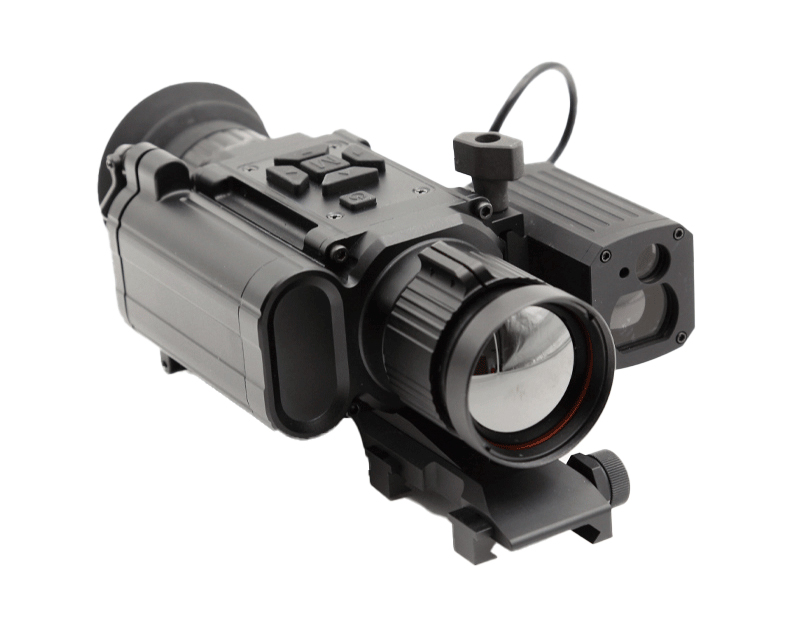December 26, 2024By: MH TECHView: 82

1. Target recognition
Thermal imaging gun sight
Based on the thermal radiation imaging of the target, it can easily detect targets with temperature differences from the environment. In military scenarios, it can penetrate camouflage nets, grass and other concealment means to quickly locate hidden enemies; in hunting scenarios, even if the prey is hidden in the woods or bushes, as long as its body temperature is different from the surrounding environment, it can be found. For example, when hunting hares at night, the heat emitted by the hare's body will make it clearly appear in the thermal imaging picture, even if it is still and the surrounding environment is complex.
It is not affected by the color and texture of the target, has little dependence on the physical characteristics of the target, and mainly focuses on temperature differences. Therefore, it has more advantages in identifying targets with similar appearance (such as distinguishing different animals or people with different equipment in the dark).
Optical sight
Relies on visible light imaging, and requires sufficient light to obtain clear images. In good light conditions, it can provide a target image with rich colors and details, which helps to identify the specific characteristics of the target, such as distinguishing the type of animal, the model of weapons and equipment, etc.
When the target color is similar to the background or the light is insufficient, the difficulty of identification increases. For example, at dusk, it may be difficult to identify a target with a similar color to the background; at night, if there is no auxiliary light source, it is basically impossible to effectively identify the target.
2. Environmental Adaptation
Thermal Imaging Gun Sight
It can work in completely dark environments, such as moonless nights, underground caves, etc., which is one of its biggest advantages. In nighttime military operations or law enforcement operations, it can ensure continuous observation and aiming at targets.
It has strong penetration in bad weather and can be used normally in environments such as smoke, mist, and dust. In fire scene rescue, it can penetrate thick smoke to observe the location of trapped people; in border patrols under dusty weather, it can also find distant targets.
Optical Sight
The performance is limited in low-light environments. Although some optical sights have a low-light enhancement function, the effect is still not as good as thermal imaging gun sights. In dimly lit rooms or at dawn and dusk, the imaging quality will decrease, and it may not be possible to accurately aim at the target.
Bad weather has a greater impact on it. For example, rain, snow, and fog can blur the field of vision, reduce visibility, and interfere with aiming. When used on rainy days, raindrops will form water droplets on the lens, affecting the clarity of the image.
3. Aiming method and accuracy
Thermal imaging gun sight
The clarity and resolution of thermal imaging images may not be as good as optical aiming, especially for some long-distance precision aiming scenes with high detail requirements. Users may need to have a good ability to interpret thermal images to determine the aiming point. For example, when shooting at a small target at a distance, thermal imaging may not be able to provide accurate target outline details like optical aiming.
Thermal imaging gun sights usually provide some auxiliary aiming functions, such as thermal crosshairs or dynamic aiming points that change according to the target temperature, to help users aim more accurately. Moreover, the temperature distribution center of the target can be clearly seen through thermal imaging, which is conducive to aiming at the key parts of the target.
Optical aiming
The crosshairs of optical sights are highly accurate and can provide clear target details in sufficient light, which is convenient for accurate aiming. For long-distance shooting, such as sniping missions, high-quality optical aiming can allow shooters to hit the target more accurately by adjusting the focal length, magnification, and other operations.
The aiming accuracy of optical sights is affected by factors such as the quality of the optical system, magnification, and user vision. If the optical system is defective, or the user has poor vision and does not adjust the diopter correctly, the aiming accuracy will decrease.
4. Convenience of use
Thermal imaging gun sights
Generally, the operation is relatively simple. After turning on the machine, you can aim according to the thermal image. Some thermal imaging gun sights also have functions such as automatic adjustment of brightness and contrast to adapt to different ambient temperatures and target temperature differences.
There is no need to consider whether the external light conditions are suitable like optical sights. It can be put into use quickly in emergency situations. For example, in night operations that encounter sudden attacks, thermal imaging gun sights can quickly help users find targets and respond.
Optical sights
It is necessary to make appropriate adjustments according to the light conditions, such as adjusting the aperture under different light intensities, adjusting the focal length and magnification under different distance targets, etc. These operations require a certain amount of time and experience, and may not be very friendly to novice users.
Some high-end optical sights have complex functions, such as fine-position adjustment, parallax correction, etc. Although these functions help improve aiming accuracy, they also increase the complexity of operation.
5. Concealment
Thermal imaging rifle scope
It does not emit visible light when working, and is relatively concealed during use. In military reconnaissance or special operations, it is not easy for the enemy to discover the user's position through visible light, which is conducive to covert observation and action.
Optical scope
It may produce reflections under strong light, exposing the user's position. Therefore, in some scenes that require covert action, anti-reflection measures need to be taken, such as using a sunshade, but this may also affect the field of view to a certain extent.